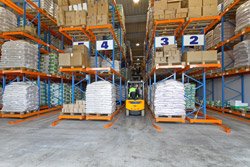
Posted to News on 17th May 2016, 17:27
Health and safety issues relating to lone working
Every company has an inviolable obligation to look after the health, safety and welfare of its employees. This fundamental duty of care is sacrosanct. It makes employers responsible for protecting people from harm by assessing risks and, where necessary, taking steps to avoid or control them.

So far, so uncontentious. But there's a problem; it's tougher to safeguard some employees than others. Lone workers quite literally provide a singular challenge in this regard because, by definition, they are unaccompanied and therefore exposed to greater potential danger.
The Health & Safety Executive insists that working alone is not, in itself, illegal. However, the law does demand that employers consider carefully - and then deal effectively with - any health and safety risks to lone workers.
Close to seven million of the UK's 31.2 million working population work in isolation or without direct supervision in a variety of industries. One of these is the warehouse sector, but engineers at machine building companies can also find themselves working in isolation.
This begs two key questions: how can managers protect those of their staff who work unaccompanied, and how can they offer reassurance to lone workers that they will be safe, come what may?
One important way is to provide some form of tracking so that, should a solitary employee become immobilised or unconscious, others will be notified that he or she is in trouble.
The VeroSafe system, for example, can wirelessly track lone staff in danger of work-related injury or attack, alerting others to emergencies and revealing the precise location of the victim.
To achieve this, lone workers wear a pocket-sized transmitter which offers real-time positioning, and identifies the name and location of the person in need.
This person can manually raise an alarm by hitting one of two "panic buttons' on their tag. However, should he or she be unable to do this because of, say, incapacity or attack, an additional feature is an on-board tilt switch that automatically sends a message to nearby personnel, alerting them to the problem and enabling them to respond and rescue the person in distress.
Follow the link to find out more about the benefits offered by VeroSafe.
Want the latest machine building news straight to your inbox? Become a MachineBuilding member for free today >>

















